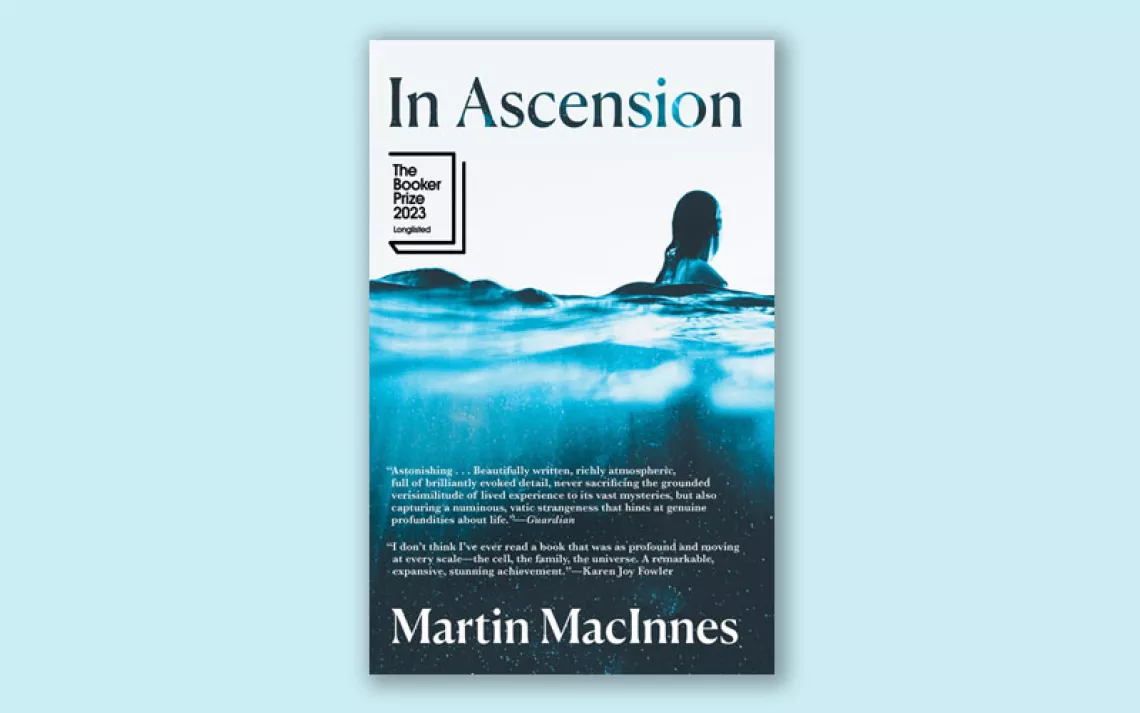River as Plaintiff
Two new books illustrate the legacy of Supreme Court Justice William O. Douglas and the Sierra Club’s role in shaping environmental law
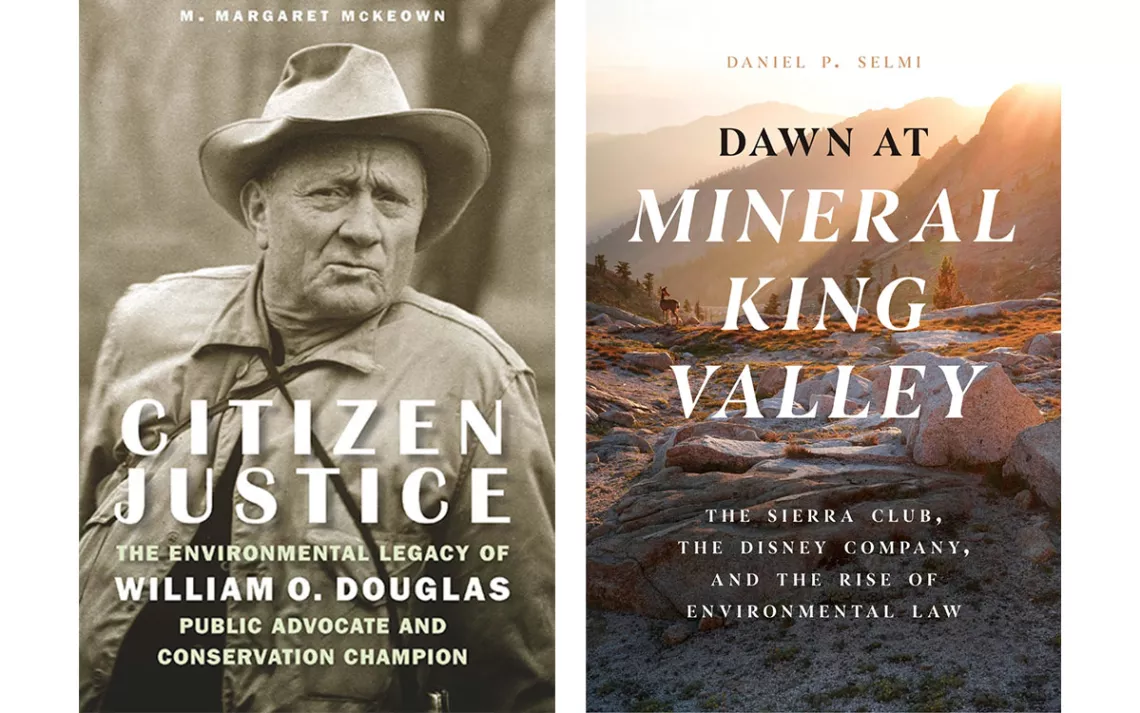
Citizen Justice: The Environmental Legacy of William O. Douglas, Public Advocate and Conservation Champion
By M. Margaret McKeown
Potomac Books, 2022
William O. Douglas was a legendary figure. Brilliant, irascible, and outspoken, Douglas thrived on controversy and refused to play the cloistered role that is generally expected for Supreme Court Justices. The longest-serving member of the Supreme Court in US history, “Wild Bill” is remembered for his frequent and fiery dissents, his lofty political aspirations, his central role in the New Deal and close friendship with President Franklin D. Roosevelt, his colorful personal life (he was married four times), his 50 books, and for the unsuccessful effort that Congressional Republicans made to impeach him. Yet beyond Douglas’s role as a jurist on our highest court, perhaps his most important and enduring contribution was as a citizen-activist fighting to conserve and protect wild places and natural areas across the country from exploitation and destructive development.
Douglas’s advocacy for the earth is the focus of Judge M. Margaret McKeown’s new book, Citizen Justice: The Environmental Legacy of William O. Douglas, Public Advocate and Conservation Champion. McKeown traces Douglas’s path to becoming a passionate advocate for ecology and the environment, terms that barely existed when he began his career. McKeown, herself a federal jurist on the Ninth Circuit Court of Appeals, does not attempt to write a comprehensive biography, noting how much has been written on his life, including his own three-volume autobiography. Instead, she examines how Douglas’ love for wild places—nurtured in childhood hikes in the Cascade Mountains of Washington State—blossomed into his volunteer role as a citizen-activist. This advocacy was separate from, and sometimes in tension with, his role on our nation’s highest court. McKeown argues persuasively that Douglas’ efforts as a passionate warrior for conservation may actually be his biggest legacy.
Douglas had extremely close ties with the Sierra Club as well as several other conservation organizations. He was a life member of the Sierra Club and served on the national board for two years in the early 1960s. Douglas only resigned his membership in the fall of 1970, just as a major case brought by the Sierra Club was heading toward the Court (more on that below). Even then, he refused to limit his active involvement in politics or advocacy based on public perceptions of how a judge should act, declaring that he had every right to be a “first-class citizen to the fullest extent compatible with [his] judicial duties.”
That advocacy took many forms. He excelled at publicizing his views, engaging in highly visible nature walks and marches, giving speeches, and penning articles and books about the places he wanted to protect. He also used his private access effectively, buttonholing key figures in Congress and the executive branches over meals, drinks, and poker games. Given his celebrity, communications skills, and connections in high places, Douglas had tremendous success as an environmental advocate, creating a lasting legacy that millions enjoy today.
Douglas loved wild places and the book recounts the key role he played in preserving many special areas, including (to name just a few) Alaska’s Arctic National Wildlife Refuge, Big Bend National Park in Texas, Tennessee’s Red Rock Gorge, the Wallowa Mountains of Oregon, portions of Olympic National Park, and countless places in the Washington Cascades (including his childhood stomping grounds, which was posthumously preserved and named as the William O Douglas Wilderness). His first and perhaps best known foray into conservation advocacy involved the C & O Canal, whose towpath had become his personal “wilderness of solitude” close to his home in Washington, DC. Taking on the political establishment, Douglas helped lead what initially appeared to be a quixotic campaign to prevent his backyard refuge from being paved over for a new highway. He published an op-ed in the Washington Post, which had been one of the strongest backers for the planned expressway, decrying the project, and challenging the newspaper’s editors to join him in hiking the length of the towpath from Cumberland to Georgetown. The editors accepted the challenge and the walk became a public spectacle, with dozens of prominent leaders struggling to keep up with Douglas’ legendary pace.
Ultimately, his efforts at what he called “hiking and hollerin’” were successful, and the highway was rerouted. Today, more than five million people enjoy the C & O towpath, making it the US’ eighth most popular national park. It seems clear that Douglas would have applauded Sierra Club’s current Outdoors for All campaign —which helps ensure that everyone has access to nature near where they live and work, regardless of race, income, or ethnicity— every bit as much as he would support the Sierra Club’s advocacy for wilderness.
Douglas’s historic tenure on the Supreme Court was ending just as environmental law started to become a significant issue in the legislatures and judicial system. Therefore, he was only involved in a handful of cases that touched on these subjects. But his influence on the then-emerging body of environmental law was still considerable. He was a fierce critic of bureaucratic overreach by agencies such as the Corps of Engineers, the Bureau of Reclamation, the Department of Interior, and the Forest Service, which back in those days usually argued in favor of development and typically fought any constraints on their ability to build new roads, dams, or other major projects. Douglas authored one major opinion on an environmental issue, stopping two Northwest utilities from building the proposed High Mountain Sheep Dam in Hell’s Canyon of the Snake River. Although the decision centered on administrative law, Douglas emphasized the project’s impact on the river’s important salmon and steelhead runs. Then- Secretary of Interior Stewart Udall termed Douglas’ opinion in the case “a conservation landmark.” It is not hard to guess where Douglas’ sympathies would lie in the current campaign, led by Sierra Club, Native American nations, and other allies, to remove the four dams on the lower Snake River that threaten the continued existence of those fish.
Sometimes known as “The Great Dissenter,” most of Douglas’s opinions touching on environmental and conservation issues noted his disagreement with the other justices. Douglas objected to the court’s decision not to take up a case involving widespread spraying of DDT to combat the gypsy moth. He also panned decisions to narrowly interpret the newly passed National Environmental Policy Act and defer to agencies in several cases, including one letting a federal agency build a highway through an urban park in San Antonio, and another authorizing a massive hydro project at Storm King in New York’s Hudson River Valley.
Douglas’ most famous dissent, and the one that has the most resonance today, arose in a case brought by the Sierra Club protesting the Forest Service’s work with the Disney Corporation to build a huge resort in remote Mineral King Valley, in California’s Sierra Nevada Mountains. McKeown devotes an entire chapter of her book to this case, Douglas’ relationship with the Sierra Club, and his historic dissenting opinion. In bringing this case, Sierra Club’s lawyers made a strategic choice not to rest their right to be in court—what is known in legal jargon as their “standing” — based on any claim that the Club or any of its members would experience harm from the development. Instead, the Sierra Club attorneys argued that courts should take the case based on the harm to Mineral King Valley itself. The Supreme Court rejected this claim, demanding that Sierra Club show specific harm to the organization or members before addressing the merits of the case. Justice Douglas’s now classic dissent argued that nature itself should have legal rights that our courts can protect. He pointed out that “both corporations and ships had long been parties in litigation, despite being artificial and inanimate. So it should be as respects valleys, alpine meadows, rivers, lakes, estuaries, beaches, ridges, groves of trees, swampland, or even air that feels the destructive pressures of modern technology and modern life.” Douglas argued that the case should have been labeled “Mineral King v. Morton” instead of being named for the organization that stepped in to defend the valley from massive development.
McKeown sketches the fascinating backstory for the case, including a controversy over whether Douglas should be recused from participating due to his prior membership in and leadership position with the Sierra Club. She also recounts the unusual way that Douglas obtained an advance copy of what subsequently became a famous law review article, “Should Trees Have Standing?— Toward Legal Rights for Natural Objects,” authored by University of Southern California professor Christopher Stone, which Douglas used in crafting his dissent. Both Douglas’ dissent and Stone’s article have become foundational texts for advocates of the “Rights of Nature” movement, which works to afford legal rights to animals, plants, rivers, and other elements of the ecosystem. While this legal movement has achieved only limited success to date in the United States, it has inspired Ecuador and several other countries to enshrine natural rights in their constitutions and foundational laws. And it has inspired many people to rethink the role our legal system should play in protecting nature as well as the interests of humans and the pursuit of profit. This movement takes a debate over a seemingly arcane legal doctrine” —the notion of “standing” ” — and places it in a moral and philosophical context in a way that inspires environmental activists to think differently about the relationship between our systems of law and the natural world.
McKeown’s book is a fascinating portrait of a complex and brilliant man whose profound love for wild and natural places led him to play a major role supporting environmental protection and conservation, both as a jurist and as a citizen-activist. It’s appropriate that Sierra Club has named our highest award for legal work on behalf of the environment for Justice Douglas. I highly recommend it to anyone who is interested in learning more about the history of our movement and a colorful character who was very influential in shaping the law and policy on these issues, and who left an indelible legacy in the lands, rivers, and trails that he fought to protect. -Ross Macfarlane
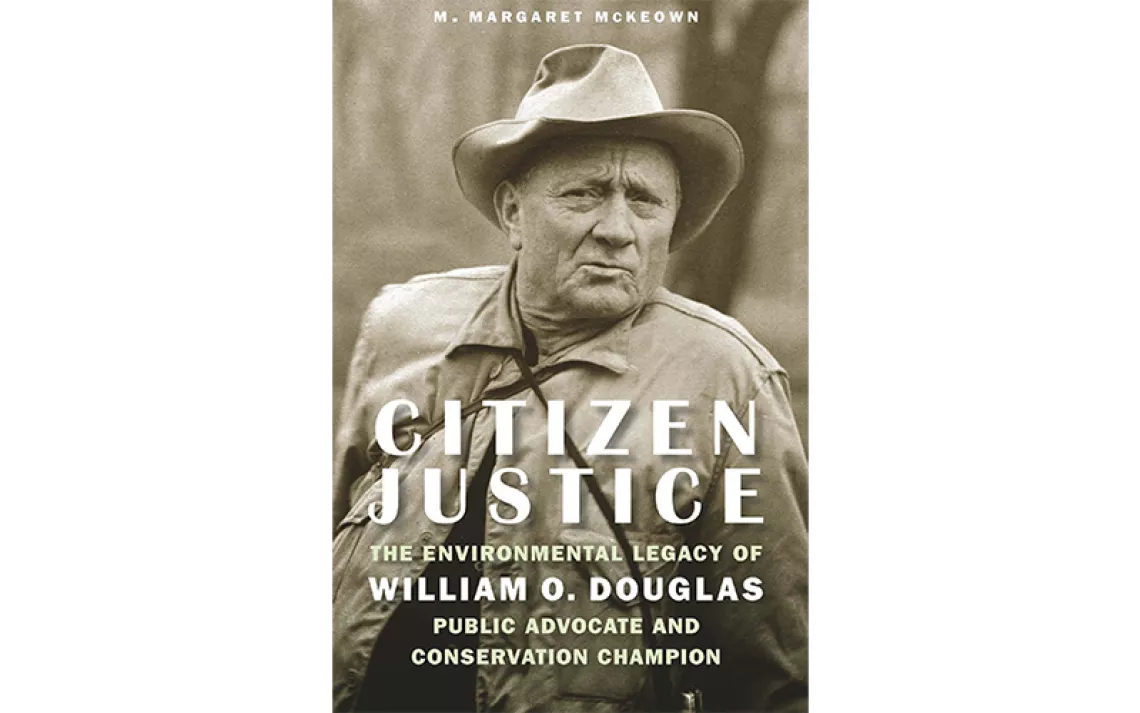
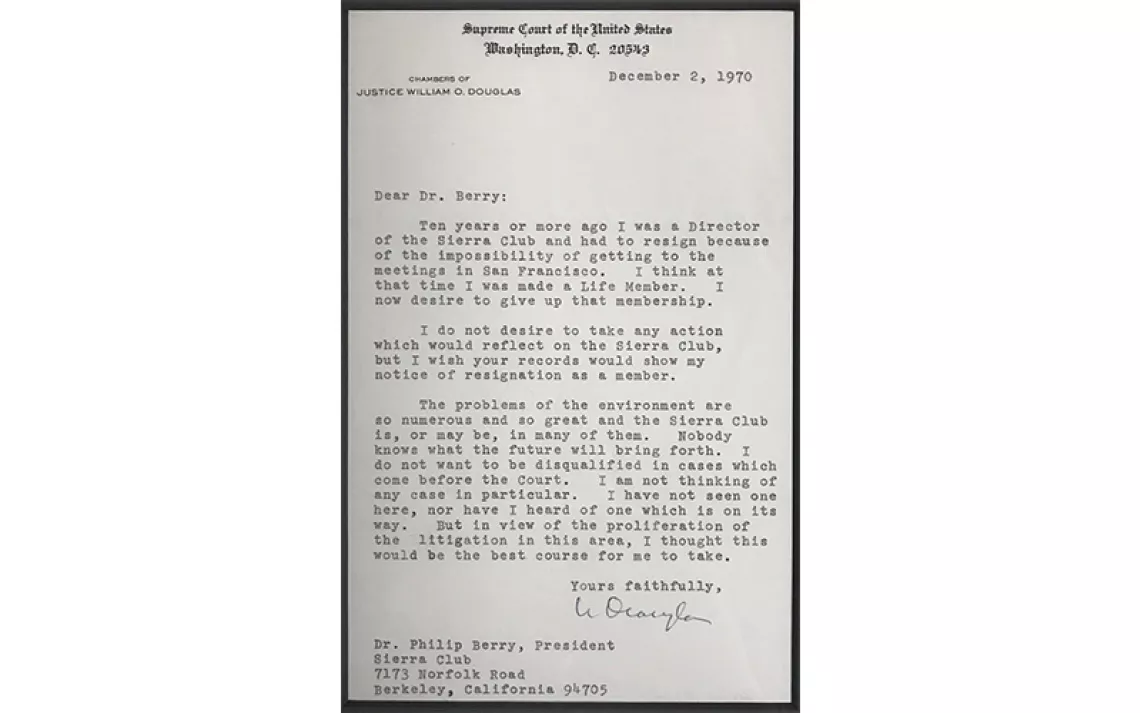
Dawn at Mineral King Valley: The Sierra Club, the Disney Corporation, and the Rise of Environmental Law
By Daniel P. Selmi
The University of Chicago Press, 2022
The spectacular and awe-inspiring Mineral King Valley rises sharply from its floor 7,300 feet above sea level to towering peaks that surpass 12,000 feet; the high country is sprinkled with 21 pristine alpine lakes. In 1903, a visitor from the Sierra Club wrote: “There is nothing in the whole Sierra Range more beautiful than the valley of Mineral King in June; nothing more like an upper valley in the Swiss Alps.” Anyone who visits Mineral King now may have a hard imagining that there could have been a massive ski resort development there instead of the alpine valley that exists today.
How was the place preserved from being turned into a ski resort? Dawn at Mineral King Valley delivers a fascinating account of how a 1971 Supreme Court decision not only played a key role in the valley’s fate but also charted a path for future environmental litigation. The Supreme Court’s landmark ruling in the case, known as Sierra Club v. Morton, addressed an issue critical not only to the environmental movement, but for all who seek to access the courts for the purpose of enforcing laws designed to benefit society. The legal issue in the case was whether the Sierra Club had “standing” to sue —which boiled down to whether the group could show the type of injury that the courts would recognize, and thus the right to bring an environmental case to court. Although the Supreme Court ruled against the Sierra Club, Justice Potter Stewart’s majority decision included a footnote that ultimate charted the path for public interest groups like the Sierra Club to gain access to the courts in order to hold public officials accountable for complying with laws they are charged with enforcing—an issue that continues to be of central importance in public interest litigation to this day. As author Selmi describes, this footnote was a last-minute clarification that suggested the Sierra Club could amend its lawsuit to allege that individual members’ recreational interests in the area provided a sufficient basis for “standing” – a test that public interest groups usually were able to meet in later cases. And despite the negative ruling, the case helped bring national attention to the issue, and in the process ultimately prevented the ski resort and protected this national treasure through its inclusion in our National Park system.
Author Daniel P. Selmi does a fine job of sketching the backstory of what would become a major environmental controversy. Selmi is a masterful storyteller whose well-researched book provides fascinating historical context for the court case. And for those interested in environmental movement history, it’s also an insightful and well-documented history of the Sierra Club’s own evolution.
When Sequoia National Park was established in 1890, Mineral King was excluded from the park boundaries, as the park services’ original focus was preserving the few remaining giant redwoods. Instead, the valley became part of the Sequoia National Forest, managed by the Forest Service after it was established in 1905.
Skiing became popular in the 1930s (by 1935, California had two ski resorts, including Yosemite’s Badger Pass) and then far more popular in the postwar years. By then, the Forest Service was championing the development of new ski areas. In the late 1940s, various ski area developers began expressing interest in developing Mineral King. Enter Walt Disney, who declared, “I can build a better ski resort than Squaw Valley” and “show how it could be done right.”
At first, the Sierra Club supported Disney’s vision of building a “better” ski resort, as many of the group’s leaders were avid skiers who sought to encourage more recreational use of the Sierra Nevada mountains. Those Club leaders also worried that the organization’s reputation would be irreversibly sullied by a decision to reverse its position, and that the odds were so stacked against the Sierra Club that it would be an impossible fight to win.
But enormous societal changes were taking place at the time, and a new generation of Sierra Club members was pushing the organization to evolve in ways that reflected that change. By the mid-1960s, the Sierra Club had largely transformed from being an elite organization focused on recreational values into a more democratic group focused more on environmental protection. Traditional members focused on recreational values clashed with new members who wanted to emphasize wildlands conservation, and the upshot, as Selmi describes, was a “rancorous debate that spread over two days for the board to resolve the club’s position.” Ultimately, the board of directors voted to oppose the Disney Corporation’s development plans through litigation, a tactic that environmental groups had just recently started to employ.
The resulting litigation pitted two prominent and well-respected American institutions against each other—and, in doing so, represented a clash of visions about what progress looks like. One magazine depicted Walt Disney digging up the mountains and leading a “war against the wilderness,” while the Los Angeles Times castigated the Sierra Club as “wilderness purists.” A Newsweek article descripted the fight between the Sierra Club and Walt Disney as “Mom v. Apple Pie.”
The litigation also caused some internecine clashes among environmentalists over how the Sierra Club could best establish its standing. While that’s mostly an issue of interest to attorneys, Selmi carefully and clearly explains the intricacies in a way that should be understandable to any reader. “At its core,” Selmi explains, “the doctrine of standing ensures that courts will only decide cases brought by individuals with a sufficient stake in a dispute to vigorously litigate it.” Traditionally, one has to show harm to be recognized as a plaintiff. The Sierra Club lawyers were committed to expanding the definition of standing. They argued that as one of the “oldest, the largest, and most respected conservation organizations in America,” the Sierra Club had a “special interest” in preserving Mineral King Valley.
In a famous dissent, Justice William O. Douglas broadened the idea of standing further still by suggesting that the valley itself should enjoy legal standing. Selmi writes: “Douglas’s dissent would have almost no influence on the practical aspects of the law of standing as they further developed. It would, however, become famous for its literate passion about the environment, its instruction on the perils facing wilderness lands, and its novel ideas on standing. Douglas was not primarily trying to convince his fellow justices to accept his position on standing; rather, he was reaching out to educate a broader public audience on environmental issues.”
In the end, the Sierra Club lost the case. But the valley was saved nevertheless, as the legal wrangling finally compelled the developers to give up the project. In 1978, Congress added the valley to Sequoia National Park.
Few observers of the time could have predicted then that this court battle would play a key role in facilitating public interest litigation for many decades to come. As Selmi accurately puts it, Sierra Club v. Morton “opened the gateway to modern environmental litigation.” And while the question of who can gain access to the courts to enforce laws aimed at benefiting society remains a critical and still-evolving issue in our nation’s jurisprudence, the test suggested in a footnote in the Supreme Court’s opinion remains essentially intact—that public interest groups like the Sierra Club may rely on the recreational and aesthetic harm suffered by their members, as a result of the legal violations they are suing over, in order to gain access to the courts. Dawn at Mineral King is a fascinating account of how that happened, sprinkled with historical gems and gripping storytelling. — Aaron Isherwood
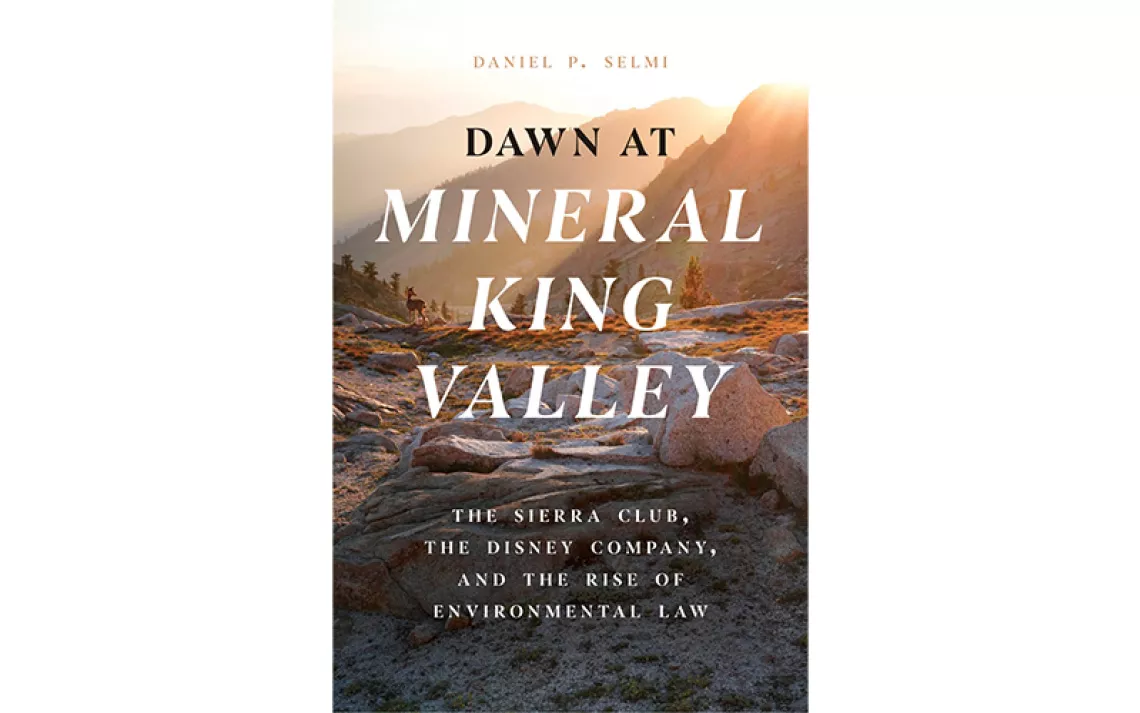
 The Magazine of The Sierra Club
The Magazine of The Sierra Club

